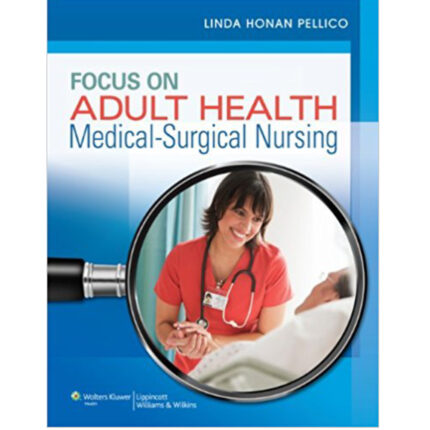Maternity and Womens Health Care 11th Edition by Deitra Leonard Lowdermilk -Test Bank
Chapter 11: Structural Disorders and Neoplasms of the Reproductive System
Lowdermilk: Maternity & Women’s Health Care, 11th Edition
MULTIPLE CHOICE
1. The nurse should be aware that a pessary is most effective in the treatment of which disorder?
a. Cystocele
b. Uterine prolapse
c. Rectocele
d. Stress urinary incontinence
ANS: B
A fitted pessary may be inserted into the vagina to support the uterus and hold it in the correct position. Usually a pessary is used for only a short time and is not used for the client with a cystocele. A rectocele cannot be corrected by the use of a pessary. A pessary is not likely the most effective treatment for stress incontinence.
DIF: Cognitive Level: Remember REF: p. 235 TOP: Nursing Process: Diagnosis
MSC: Client Needs: Health Promotion and Maintenance
2. A postmenopausal woman has been diagnosed with two leiomyomas (fibroids). Which clinical finding is most commonly associated with the presence of leiomyomas?
a. Abnormal uterine bleeding
b. Diarrhea
c. Weight loss
d. Acute abdominal pain
ANS: A
Most women are asymptomatic. Abnormal uterine bleeding is the most common symptom of leiomyomas. Diarrhea is not commonly associated with leiomyomas. Weight loss does not usually occur in the woman with leiomyomas, and the client with leiomyomas is unlikely to experience abdominal pain.
DIF: Cognitive Level: Understand REF: p. 240
TOP: Nursing Process: Assessment MSC: Client Needs: Physiologic Integrity
3. Which woman is at the greatest risk for psychologic complications after hysterectomy?
a. 55-year-old woman who has been having abnormal bleeding and pain for 3 years
b. 46-year-old woman who has had three children and has just been promoted at work
c. 62-year-old widow who has three friends who have had uncomplicated hysterectomies
d. 19-year-old woman who had a ruptured uterus after giving birth to her first child
ANS: D
The 19-year-old woman is still in her childbearing years. Often the uterus is related to self-concept in women in this age group, and they may feel that sexual functioning is related to having a uterus. The 55-year-old woman is past her childbearing years and has had bleeding and pain for 3 years. The hysterectomy may be well received as a method of pain relief. The 46-year-old woman has a family and positive events occurring in her life (job promotion). The 62-year-old woman is past her reproductive years and has relationships with others who have had positive outcomes.
DIF: Cognitive Level: Understand REF: p. 243 TOP: Nursing Process: Diagnosis
MSC: Client Needs: Psychosocial Integrity
4. A 48-year-old woman has just had a hysterectomy for endometrial cancer. Which statement alerts the nurse that further teaching is needed?
a. “I can’t wait to go on the cruise that I have planned for this summer.”
b. “I know that the surgery saved my life, but I will miss having sexual intercourse with my husband.”
c. “I have asked my daughter to come and stay with me next week after I am discharged from the hospital.”
d. “Well, I don’t have to worry about getting pregnant anymore.”
ANS: B
Stating that she will miss having sexual intercourse with her husband indicates that further teaching is needed for this client regarding sexual activities after a hysterectomy. Although intercourse may be initially uncomfortable, the use of water-soluble lubricants, relaxation exercises, and changes in position may be helpful. Expressing plans for a vacation is a positive psychologic state with plans for the future. Stating that her daughter will stay with her indicates the client understands that she may need assistance during her acute recovery period. Stating that she no longer needs to worry about getting pregnant indicates knowledge related to the reproductive cycle and a positive outlook.
DIF: Cognitive Level: Apply REF: p. 244 TOP: Nursing Process: Evaluation
MSC: Client Needs: Health Promotion and Maintenance
5. The nurse provides education to a client about to undergo external radiation therapy. Which statement by the client reassures the nurse that the teaching has been effective?
a. “I am using ointment to keep my skin from drying out.”
b. “I wash the irradiated area with deodorant soap.”
c. “My diet is high in protein, and I drink at least 2000 ml of fluid a day.”
d. “I wash off the markings for the radiation site after each treatment.”
ANS: C
To maintain good nutrition, the woman should eat high-protein meals or use protein supplements and should have a high daily fluid intake of 2 to 3 L. The woman is counseled about good skin care and taught to avoid soaps, ointments, cosmetics, and deodorants because these may contain metals that would alter the radiation dose she receives. Markings may be made to indicate the exact location needed for irradiation and should remain until the treatment is complete.
DIF: Cognitive Level: Understand REF: p. 253 TOP: Nursing Process: Planning
MSC: Client Needs: Physiologic Integrity
6. With regard to the treatment plan for a pregnant woman with gynecologic cancer, which statement about timing or type of treatment is correct?
a. The fetus is most at risk during the first trimester.
b. The fetus is most at risk during the second trimester.
c. The fetus is most at risk during the third trimester.
d. Surgery is more risky than chemotherapy in the first trimester.
ANS: A
The first trimester is the most vulnerable period for the growing fetus. Women may be faced with making a decision about terminating the pregnancy, depending on the stage and extent of the disease. For advanced disease in the second trimester, alkylating agents, 5-fluorouracil (5-FU), and vincristine are relatively safe for the fetus. For advanced disease in the third trimester, alkylating agents, 5-FU, and vincristine are relatively safe for the fetus. Surgery is less risky than chemotherapy in the first trimester.
DIF: Cognitive Level: Apply REF: p. 262 TOP: Nursing Process: Planning
MSC: Client Needs: Health Promotion and Maintenance
7. Which precaution should the nurse take while caring for a client who is undergoing internal radiation therapy for cervical cancer?
a. Wear gloves when assessing the cervical intracavity implant.
b. Instruct the client to urinate in the lead-lined bedpan or “hat” every 2 hours.
c. Prepare the client for an enema before inserting the implant.
d. Limit staff or visitor exposure to 30 minutes or less in an 8-hour period.
ANS: D
Staff and visitor exposure should be limited to 30 minutes or less in an 8-hour period to reduce the risk of overexposure to radiation. Nurses need to protect themselves from overexposure to radiation. Wearing a shield is one method of protection. An indwelling catheter is inserted to prevent urinary distention that could dislodge the applicator. No bowel preparation is necessary.
DIF: Cognitive Level: Apply REF: p. 255
TOP: Nursing Process: Implementation
MSC: Client Needs: Safe and Effective Care Environment
8. What is the most common reproductive tract cancer associated with pregnancy?
a. Cervical
b. Uterine
c. Ovarian
d. Fallopian tube
ANS: A
The incidence of cervical cancer concurrent with pregnancy is reported to be 1 in 2000 pregnancies making it the most common reproductive tract cancer associated with pregnancy. Uterine cancer is rarely diagnosed during pregnancy. Ovarian cancer is the second most frequent cancer diagnosis in pregnancy. At an incidence rate of approximately 1%, fallopian tube cancer remains a rare occurrence. The peak incidence of tubal cancer is between the ages of 50 and 55 years; for this cancer to be concurrent with pregnancy is only a remote possibility.
DIF: Cognitive Level: Remember REF: p. 260
TOP: Nursing Process: Assessment MSC: Client Needs: Health Promotion and Maintenance
9. When caring for clients with neoplasms of the reproductive system, the nurse must begin by assessing the woman’s knowledge of the disorder, its management, and prognosis. This assessment should be followed by a nursing diagnosis. Which diagnosis fails to address the psychologic effect of these disorders?
a. Anxiety, related to surgical procedures
b. Disturbed body image, as a result of changes in anatomy
c. Risk for injury, related to lack of skill for self-care
d. Interrupted family processes
ANS: C
Although risk for injury, related to lack of skill for self-care, is appropriate to this client’s condition, this diagnosis is more suited to the client’s learning needs than the psychologic effect. Anxiety, related to surgical procedures, is appropriate for addressing psychosocial concerns; the client may also develop anxiety related to the diagnosis and prognosis and whether or not surgery is required. Disturbed body image is an applicable diagnosis; changes in her anatomy and function may also result in low self-esteem and ineffective coping skills. Interrupted family processes is a possible and acceptable diagnosis; functional and anatomic changes may result in the client’s inability to fulfill her familial role. Depending on the severity of her condition, interrupted family processes could also lead to social isolation.
DIF: Cognitive Level: Analyze REF: p. 247 TOP: Nursing Process: Diagnosis
MSC: Client Needs: Psychosocial Integrity
10. The prevalence of urinary incontinence (UI) increases as women age, with more than one third of the women in the United States suffering from some form of this disorder. The symptoms of mild-to-moderate UI can be successfully decreased by a number of strategies. Which of these should the nurse instruct the client to use first?
a. Pelvic floor support devices
b. Bladder training and pelvic muscle exercises
c. Surgery
d. Medications
ANS: B
Pelvic muscle exercises, known as Kegel exercises, along with bladder training can significantly decrease or entirely relieve stress incontinence in many women. Pelvic floor support devices, also known as pessaries, come in a variety of shapes and sizes. Pessaries may not be effective for all women and require scrupulous cleaning to prevent infection. Anterior and posterior repairs and even a hysterectomy may be performed. If surgical repair is performed, then the nurse must focus her care on preventing infection and helping the woman avoid putting stress on the surgical site. Pharmacologic therapy includes selective serotonin-norepinephrine reuptake inhibitors or vaginal estrogen therapy. However, pharmacologic therapy is not the first action a nurse should recommend.
DIF: Cognitive Level: Apply REF: p. 238
TOP: Nursing Process: Implementation MSC: Client Needs: Physiologic Integrity













Reviews
There are no reviews yet.